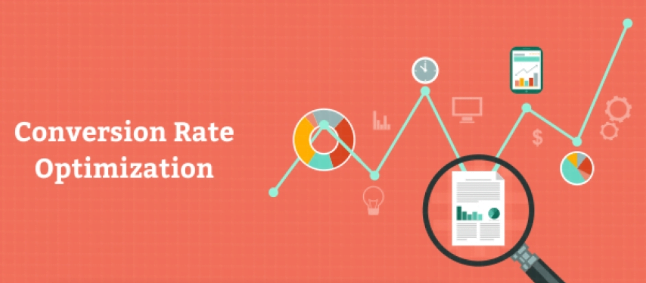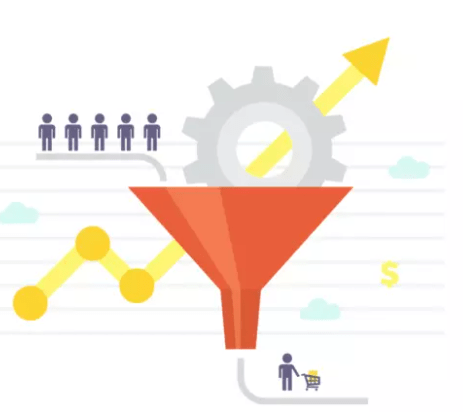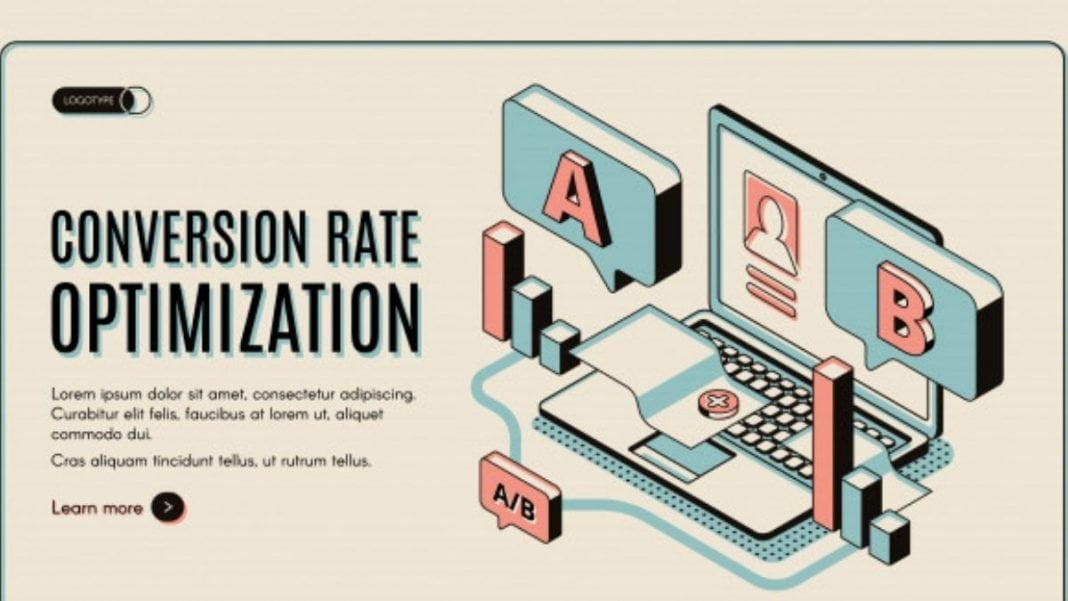Running a successful online business is no cakewalk and may require you to pour your blood, sweat, and tears. To sustain in the competitive market, business owners need to focus on conversion rates. In case conversion rate optimization is a fancy term for you, or if you lack sufficient knowledge on it, this article will make you aware of the concept of conversion rate optimization.
To begin with, let’s get familiar with the associated terminologies:
What is conversion rate?
Conversion rate refers to the percentage of website visitors that gets transformed into your potential buyers or persuaded to complete your desired action like signing up for your website or newsletter. It also indicates the number of leads that convert to sales.
Also Read: 10 Best Clickfunnels Alternatives
What is Conversion rate optimization?
Conversion rate optimization in digital marketing refers to the process of increasing your conversion rates. You can do conversion rate optimization through enhanced website design, engaging content, and by lowering acquisition costs.

If you are still wondering why do you need a CRO in your business, and then scroll down to gain a deeper understanding:
Importance of conversion optimization:
A higher conversion rate indicates that you have maximized the sales and have a better ROI.
Let’s take a sneak-peek into some of the reasons for which conversion optimization becomes so essential for your business:
Gaining competitive advantage:
Conversation rate optimization gives you a competitive advantage and lets you stay ahead of your customers. If you intend to convert your website visitors into your buyers or want them to do actions like signing up a newsletter, you can consider utilizing the CRO strategies.
Increased revenue:
Conversion rate optimization leads to increased revenue generation through sales maximization. CRO indicates better customer lifetime value, and the customer lifetime value increases your return significantly. For instance, if you sell a product for twenty dollars and if your average customer lifetime is five years, then your LTV per customer becomes twenty dollars multiplied by sixty (months), which equates to twelve hundred dollars. Hence through each additional conversion, you can earn twelve hundred dollars.

Decreased customer acquisition cost and lowered marketing funds:
CRO allows you to get more value from your existing customers, and hence you can expect lower acquisition costs. Also, by the aid of CRO, you spend lesser time acquiring new leads. Since time is money, it will be advantageous to save time in doing something more profitable. Through CRO, you will need to spend lesser on the marketing funds, and hence you can pile on more budget for some other investments.
Average Conversion rate analysis:
Determining your conversion rate is helpful for your business.

The calculation of average conversion date analysis is a straightforward process and is explained below:
How to calculate sales conversion rates?
The calculation of the sales conversion rate is a straightforward process. You have to divide the total number of conversions by the total number of website visits or the client interactions you had.
If you had a hundred interactions, out of which six of them converted to sales, your conversion rate becomes 0.06. To determine the percentage, you need to multiply the output by a hundred. Hence, in this case, the conversion rate percentage becomes six percent. Simple Maths!! Isn’t it?
Your conversion rate can depend on several factors. Hence you can see that some industries will have a lower conversion rate than the others. Let’s find the conversion rates by industries:
Average b2b lead conversion rate:
In business to business, where one business will do a commercial transaction with another, the conversation rate will depend on the industry type. For instance, professional and financial services or media and publishing can increase the conversion rate of ten percent. While for the other industries, the conversion rate can vary between 3-8 percent. In recent research by Implicit, it was portrayed that the b2b lead conversion rates or the average lead to opportunity conversion rate were thirteen percent, and the average time for conversion is eighty-four days.B2B involves a higher price, longer sales cycle, and the stakeholders’ involvement, hence the conversion rate different from the other sectors. B2B conversion rate optimization can be carried out by improving the quality of leads. One of the ways to improve the quality of leads as well as the overall sales process is to utilize guided selling tools.
For spotting good leads, you can analyze the below aspects:
Priorities: You need to find out the priorities of your leads. Your solutions should be aligned to their needs.
Long term plans: Yow must familiarize yourself with the long term plans of your clients. You should also check if the solutions provided by your company helped them in the long term plan.
Risk: You have to be aware of your clients’ risks, and you should check how you can allay those fears.

The average conversion rate will depend on the industry, the geographical location, and many other factors. The average site conversion rate was calculated as 2.35 percent.
According to the prediction by the experts, the average sales conversion rate remains between 2-5 percent. Hence, if you manage to increase your conversion rate to four from two, which seems to be a massive jump, but you will still fall in the average category.
The good news is that having an extra-ordinary conversion rate is attainable, but it may need you to beat the sweat. If you manage to increase your conversion rate to six percent or more, you will outperform most of your competitors. However, you will still have some room to grow.
In case you are still wondering that the conversion rate will depend on the industry you are dealing with, you are right. If you are in the ecommerce segment, then you can expect a lower conversion rate. According to the recent data analysis by Monetate, an American software company, the average conversion rate for ecommerce sites is 2.58 percent globally.
Conversion rate optimization in digital marketing aims at converting your lookers into buyers.
Through the right conversion rate optimization strategy, you can maximize the result spent in PPC.
In case you are thinking of improving user experience and conversions, you can refer to the below conversion rate optimization tips to maximize your conversion rates.
Check the customers’ feedback daily: You must not consider criticisms as demotivating. If you aim for website conversion rate optimization, you should aim to look for your customers’ constructive criticisms. Different customers can behave differently upon landing on your web page. It would help if you made a sincere effort to find out what your customer is looking for or what information they want. Their answers will help you find more insights that can improve your website’s effectiveness to a considerable extent.
Select the visuals carefully:
Visuals play an essential role in engaging customers. However, some images can distract your clients and adversely affect calls-to-action. You must choose the visuals carefully and emphasize putting the contents that answer the questions: what, why, and how. For increasing the b2b website conversion rates, you must avoid unnecessary clutters in your website. Having a simple and user-friendly interface will indicate better website conversion and b2b sales conversion rates.

Utilize remarketing as the CRO tool: Most of the website visits do not convert into sales. Remarketing targets those visitors who turned away from your website. Through remarketing, you can increase brand recall and repeat visitor rates. Remarketing allows you to bid aggressively on the visitors who had shown prior interest. For having a high CTR, you should get rid of the lousy ads and be more creative.
Utilize conversion rate optimization tools: The conversion rate optimization tools like Marketization, Similar Web, Survey Monkey, etc. helps you to have the desired conversion rate that you had been looking for. Installing these conversion rate optimization tools with increase your ROI to a considerable extent.
Get creative with the offers: Getting creative with your requests is a good website conversion strategy. You need to think out of the box and offer something that will give you a competitive advantage. You can also consider combining your offers to find out which will resonate the best with the customer’s mindset. Perform a website conversion analysis, and if you see that your conversion rate is stuck at two or three percent, then it is high time to review your offers.

It is frustrating to see more than ninety percent of your traffic walking away and never coming back. In this situation, conversion rate Optimization comes to your rescue. You should not only focus on increasing your website traffic but also to maximize sales through CRO. Conversion rate optimization in digital marketing will help you to convert your website into a money-making machine. Hence, implement the CRO strategies to slay your competitors and to reach the pinnacle of success.
Read More:
- Why It Is A Good Idea To Get SEO Services
- How To Write Effective SEO Copy For Your Website?
- How To Generate Sales And Revenue Using SEO
- Tips to Optimize Your Website for Local SEO
- Top 20 Online Marketing Tools That Will Help You for SEO
- SEO Backlink Strategy Guide
- Small Guide on How to Improve your Local SEO
- Private: SEO for Ecommerce: How to Drive More Valuable Traffic to Your Product Pages
- Quick Guidelines to Avoid the Most Common SEO Mistakes!
- Latest SEO Trends

